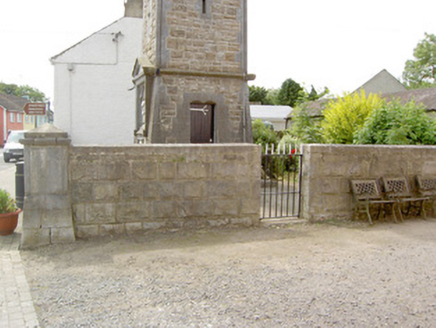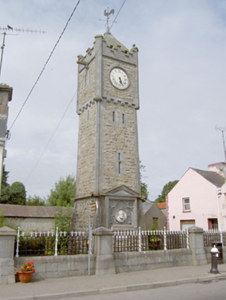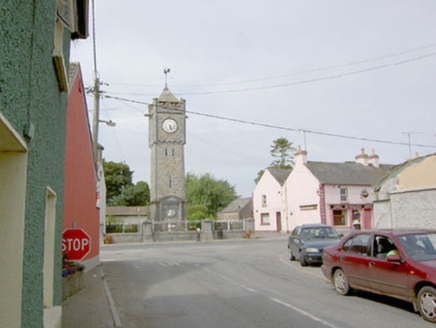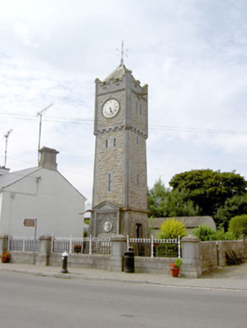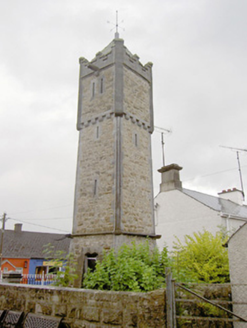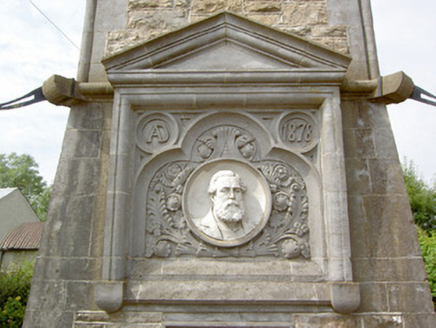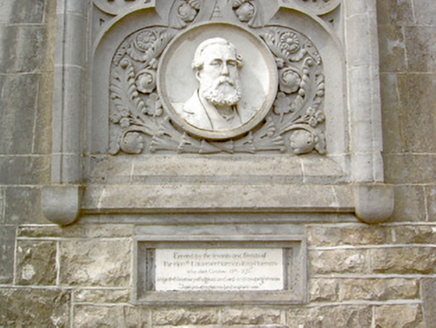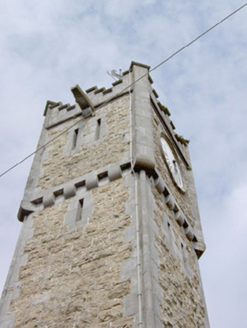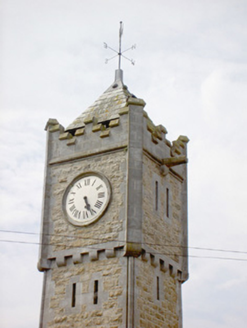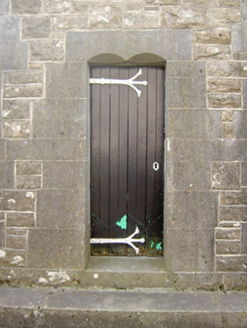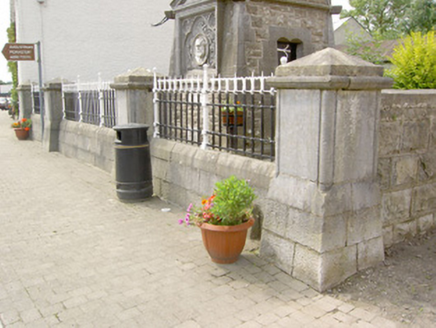Survey Data
Reg No
13313015
Rating
Regional
Categories of Special Interest
Architectural, Artistic, Historical, Social, Technical
Original Use
Clock
In Use As
Clock
Date
1875 - 1880
Coordinates
212296, 263641
Date Recorded
07/08/2005
Date Updated
--/--/--
Description
Freestanding three-stage Gothic Revival clock tower on square-plan, dated 1878. Pyramidal slate roof with cast-iron weather vane and castellated cut limestone parapet having Irish style crenellations. Base batter at first stage level. Snecked rock-faced limestone with corbelled limestone string course and cut limestone engaged corner shafts/pilasters to third stage, carved limestone rolled mouldings to corners of second stage and cut limestone quoins to first stage. Clock face to east elevation of third stage. Carved limestone aedicule framing carved limestone date plaque and marble bust, with additional carved marble plaque below, to east elevation of first stage. Loop windows to second stage of east elevation, second and third stages of other elevations, having cut limestone surrounds and leaded glass. Square-headed door opening to north elevation of first stage with carved limestone lintel having concave profile and cut limestone surround. Timber battened door with decorative wrought-iron hinges. Set behind tooled and rock-faced cut limestone walls with cast-iron railings to east elevation, having cut limestone piers on square plan with battered base, carved roll mouldings to edges and pyramidal capping. Set back from road at main T-junction to the centre of Keenagh village. Cast-iron water hydrant, c. 1900, to the east.
Appraisal
This imposing turret-like clock tower commemorates Laurence King-Harman (1816-75), 'a good landlord and an upright man', and a foliated aedicule carrying his portrait contributes significantly to its artistic interest. King-Harman was a brother of the sixth Earl of Kingston of Mosstown House, Keenagh, hence the erection in the village centre of this clock tower 'by friends and tenants'. The clock tower occupies a prominent site and its weathervane is a familiar landmark visible from several points around the surrounding countryside. The clock tower was designed by the London-based Sir Robert William Edis (1839-1927) and, according to Slater's Directory (1881), it came in at a cost of over £1,000 with the tower costing £500 and the clock costing £550. The clock supplied by John Moore and Sons of Clerkenwell, London, is of technical interest. The bell was cast by John Taylor and Company of Loughborough in Leicestershire.
